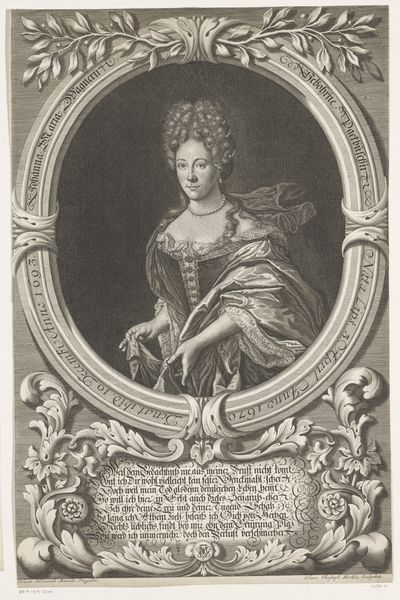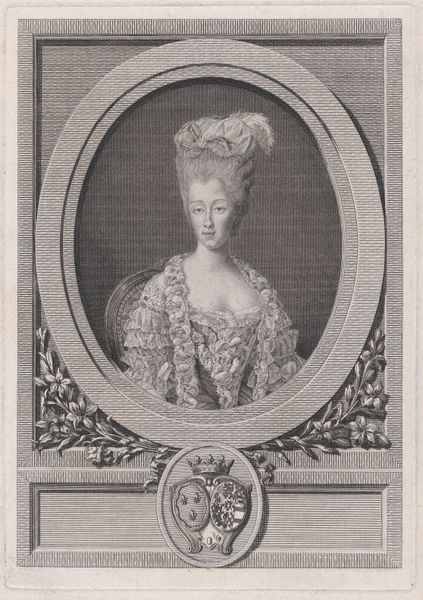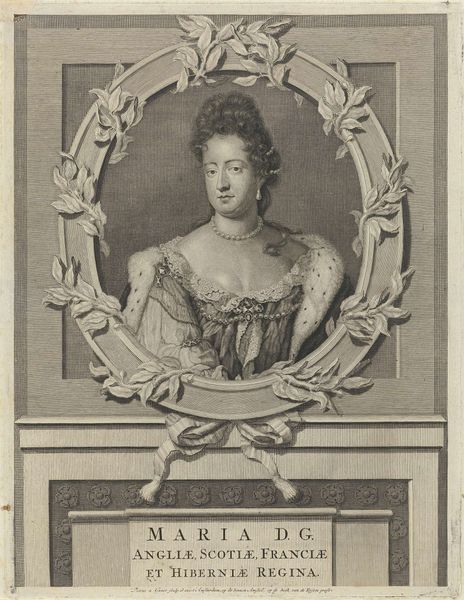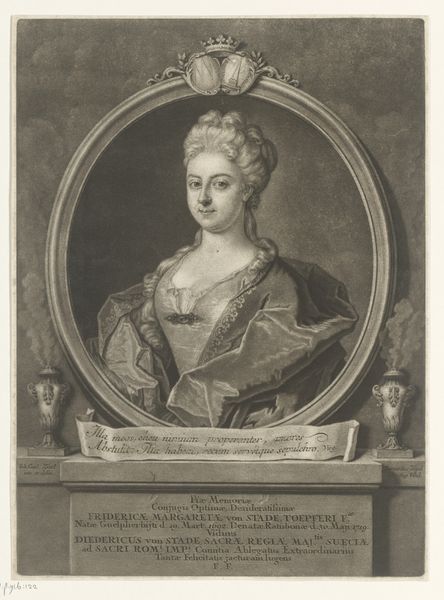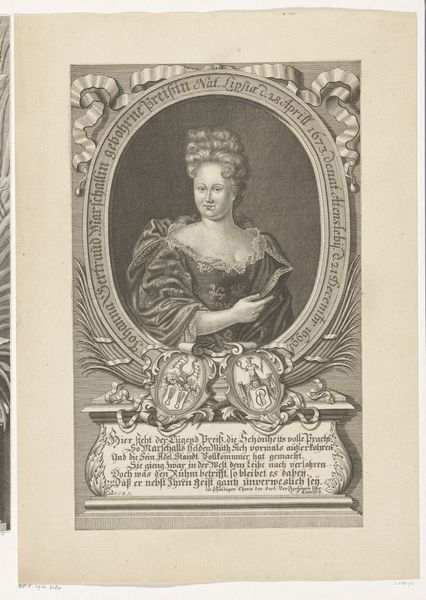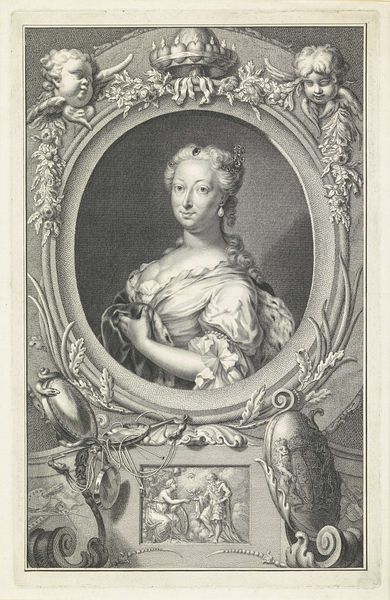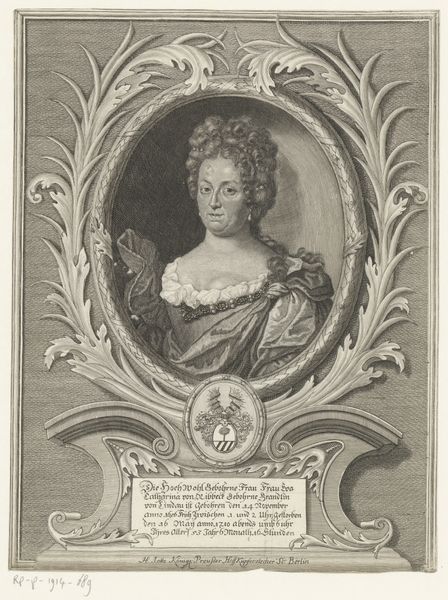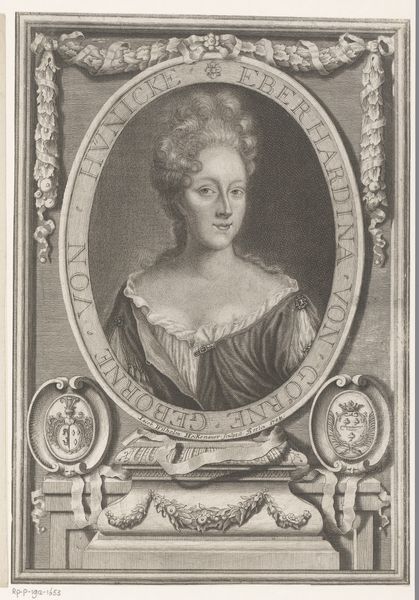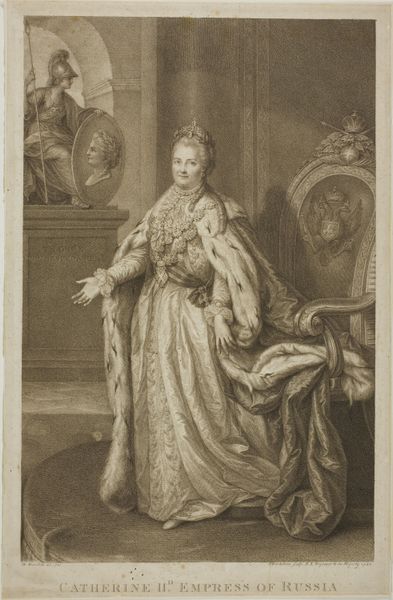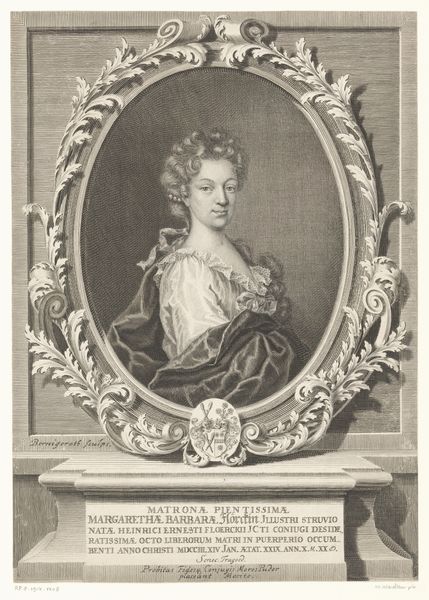
print, engraving
#
portrait
#
baroque
# print
#
figuration
#
pencil drawing
#
history-painting
#
engraving
Dimensions: height 285 mm, width 181 mm
Copyright: Rijks Museum: Open Domain
Johann Tscherning created this portrait of Dorothea Elisabeth Hessig, using engraving—a printmaking process that demands precision and control. An engraver uses a tool called a burin to carve lines directly into a metal plate, typically copper. The depth and spacing of these lines determine the tones and textures of the final image. Think about the labor involved: each line carefully incised, building up the image from dark to light. The engraver’s skill transforms a blank plate into a likeness, but it’s also a translation. The sharp, unwavering lines of the engraving lend a formality and clarity, perfectly suited to portraiture of the period. Notice how this technique captures the sitter’s likeness and the textures of her clothing, while also conveying a sense of status and decorum. Tscherning’s technique reflects the values of a society that prized order, skill, and the ability to transform raw materials into objects of lasting value. It blurs the line between craft and fine art, showing how technical skill can be used to create images of cultural and social significance.
Comments
No comments
Be the first to comment and join the conversation on the ultimate creative platform.

